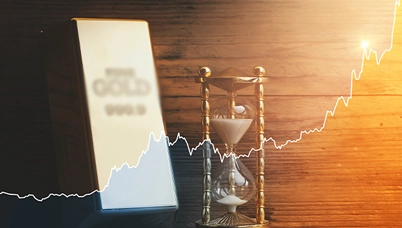Breakdown or Breakout? Analysis of Indian Stock Market
Posted On Sunday, Jan 01, 1950
Are the Indian stock markets about to breakdown?
Or are the markets pausing and letting out some steam before they breakout and head northwards towards some higher level?
The BSE-30 Index has gained +65% from the start of the year (see Graph 1). Technical analysts - who study the past patterns and volumes of these squiggly lines - would be nervous that (at 15,896) the BSE-30 Index is below its 30-day moving average of 16,805 and dangerously close (just +2% more) to its 100-day moving average of 15,594.
Like the chief in the Asterix comic books, they will worry that the sky could fall on our heads. If the Index "breaks" the 15,594 level and stays weak, they will start to worry that it could slip to lower levels. Like the 12,585 level of the 300-day moving average.
Graph 1: Is the market tired - and about to roll over?

But stepping back into a different time line - say from January 1, 2008 till October 30, 2009 - one can see (Graph 2) that the Index may be tired after a great run up of +91% from its low on March 9, 2009 - but could head higher over the next 9 months.
Graph 2: Can the Index surge +31% to reach the previous peak of 20,873 set on January 8, 2008?

The BSE-30 Index is a sample of 30 stocks that sort of tells us where the "markets" are headed.
On a day when we hear that the markets are "down", we have this picture in our head that all the stocks we own in our portfolio may be "down".
On a day when we hear that the markets are "up", we have this picture in our head that all the stocks we own in our portfolio are "up".
While it is true that the Index is "representative" of what may happen to a portfolio of stocks the BSE-30 Index (or any Index) has a limitation: one of size.
By definition, the BSE-30 Index has 30 stocks - it cannot have more.
And there are a few stocks that are powerful and "drive" the Index.
For example, the Index lost -12,713 points from its peak to its low point (see Table 1) and 5 stocks accounted for 44% of this decline.
| Index high on Jan 8, 2008 | 20,873 | |
| Index low on March 9, 2009 | 8,160 | |
| Loss of points | -12,713 | |
| % loss of Index | -61% | |
| Company | Responsible for what chunk of the loss? | |
| in points | in % | |
| Reliance Industries | -1,959 | 15% |
| ICICI Bank | -1,101 | 9% |
| L&T | -1,195 | 9% |
| Reliance Communications | -685 | 5% |
| HDFC | -643 | 5% |
| These 5 stocks | (5,583) | 44% |
On the rebound, the Index has gained +7,570 points from its low (see Table 2) and 5 stocks accounted for 28% of the gain.
| Index low on March 9, 2009 | 8,326 | |
| Index as of October 30, 2009 | 15,896 | |
| Gain of points | 7,570 | |
| % Gain of Index | 91% | |
| Company | Responsible for what chunk of the gain? | |
| in points | in % | |
| Reliance Industries | 835 | 7% |
| ICICI Bank | 808 | 6% |
| L&T | 725 | 6% |
| Infosys | 664 | 5% |
| HDFC | 502 | 4% |
| These 5 stocks | 3,534 | 28% |
- The stocks that brought the Index down have not really made good all their "losses". For example, Reliance’s share price movements from the peak of 2008 to the low of 2009 accounted for 15% of the decline in the Index. But Reliance has accounted for just 7% of the gain in the Index from the lows. Reliance, in that sense, has "underperformed".
- In fact, that "underperformance" is true for ICICI Bank, L&T, and Reliance Communications. HDFC has pretty much made up its loss of -4% with a gain of +4%. And Infosys has been an "out performer": its gain of +5% on the recovery side was more than its loss (it did not feature in the Table 1 as its loss contribution was -2%).
- The Big 5 had more of a role in bringing the market down (they accounted for 44% of the loss in the Index) and less of a role in bringing the market up (28%). So, maybe this market rise is with more depth and breadth - more stocks within the BSE-30 with smaller weights in the Index have done well. For example DLF has gained +153% in the same time period that Infosys was up +81%. But, because Infosys has a larger market cap (and hence a larger influence in the Index), its +81% gain had a larger contribution to the rise of the Index.
- The movement of a few stocks can have quite a large impact on the Index and the broader market - and this gives the illusion that times are good. Or that times are bad. For example, the portfolio of Quantum Long Term Equity Fund has not owned Reliance, ICICI Bank, L&T, or Reliance Communications - but the sharp movements in the share prices of these bellwether stocks did have a dramatic impact on the NAV of the mutual fund because many other stocks in the market also declined in the "bear market". The NAV of the Fund fell -54% against the -61% decline of the Index. One can insulate one’s portfolio from specific companies but one will still move with the direction of the market.
The movement in the markets (and in your stock portfolios) is, in the final analysis, a reflection of everything that is "known".
The pace with which foreign money enters - or leaves - Indian stock markets has an impact on the Index.
The earnings of the Indian companies - themselves a complex interaction of India’s GDP, global GDP, competition, and efficiency of management - to name a few.
How we all interpret the news and the events - our "sentiments" - come to full force in the fight between the bulls and the bears.
And, boy, are they fighting!
There is a massive tug of war going on between the bulls and the bears who wish to make money on short term movements. Sometimes they switch roles within a day: a bear turns to a bull and a bull turns into a bear.
But let them play their games.
The stock exchanges will now be open for another 1 hour of trading.
Look out for more breathless TV anchors as they comment on the big battles and movements in the Index.
As investors for the long haul know, these wonderful graphs and tables are interesting things to study once in a while.
They give us some interesting data for the past - but tell us little about the future.
Whatever their battles, continue ploughing your money - bit by bit - into the stock markets for sensible long-term returns.
| Quantum Long Term Equity Fund | Quantum Gold Fund (NSE symbol: QGOLDHALF) | Quantum Liquid Fund | |
| Why you should own it: | An investment for the future and an opportunity to profit from the long term economic growth in India | A hedge against a global financial crisis and an "insurance" for your portfolioA hedge against a global financial crisis and an "insurance" for your portfolio | Cash in hand for any emergency uses but should get better returns than a savings account in a bank |
| Suggested allocation | 80 % | 20% | Keep aside money to meet your expenses for 6 months to 2 years |
Disclaimer : Past performance may or may not be sustained in the future. Mutual Fund investments are subject to market risks, fluctuation in NAV's and uncertainty of dividend distributions. Please read offer documents of the relevant schemes carefully before making any investments. Click here for the detailed risk factors and statutory information"
Ajit Dayal, the author is a Director in Quantum Information Services Private Limited and Quantum Asset Management Company Private Limited. Views expressed in this article are entirely those of the author and may not be regarded as views of the Quantum Mutual Fund or Quantum Asset Management Company Private Limited or Quantum Information Services Private Limited.
Mutual Fund Investments are subject to market risks. Please read the offer documents of the respective schemes before making any investments
Note: This article was first carried on www.equitymaster.com
Related Posts
-

Understanding GIPS: The Global Standard for Performance Reporting
Posted On Wednesday, Jan 14, 2026
In the world of investing, everyone loves a good performance number.
Read More -

Equity Monthly for January 2026
Posted On Friday, Jan 02, 2026
Indian markets remained range-bound in 2025
Read More -

Gold Monthly for January 2026
Posted On Thursday, Jan 01, 2026
Gold Market Review and Outlook: 2025–2026
Read More



